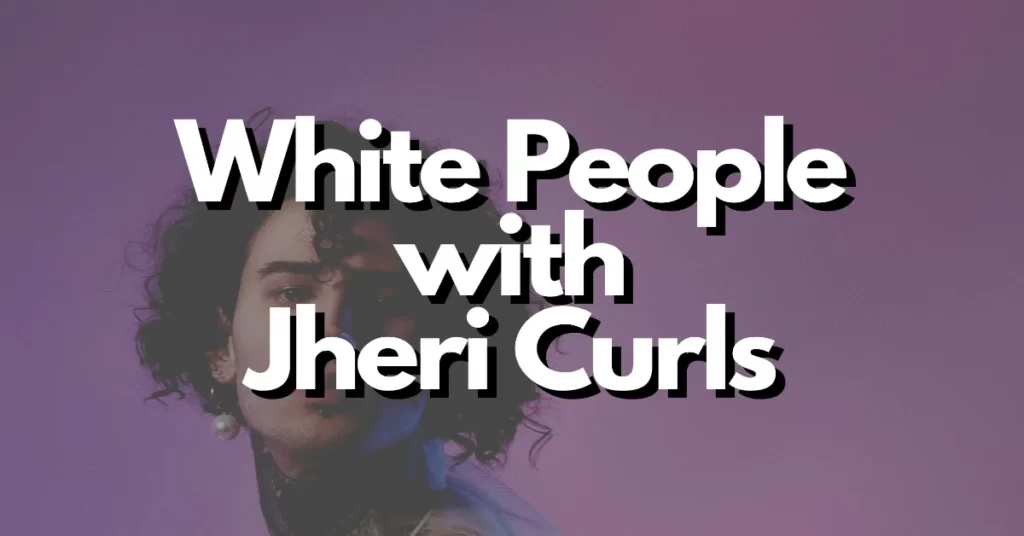Hairstyles have long been a form of self-expression and cultural identity. Jheri curls, with their distinct texture and iconic appearance, have made their mark in the realm of hair fashion. However, the question arises: should white people have Jheri curls?
In this blog post, we will explore the history and cultural significance of Jheri curls, considering factors such as hair texture, maintenance requirements, personal style, and the ongoing debate surrounding cultural appropriation. By examining these aspects, we aim to provide insights and foster an informed understanding of the topic.
The History of Jheri Curls: Tracing the Origins and Cultural Significance
The Jheri curl hairstyle emerged in the 1970s and 1980s, gaining popularity as a distinctive and iconic look among African American communities. It was named after Jheri Redding, a chemist who developed the curl-enhancing products used to achieve the hairstyle. The Jheri curl represented a celebration of natural curls and became a symbol of self-expression and cultural identity within the Black community.
Its popularity extended beyond racial boundaries, making it a notable hairstyle in pop culture. Understanding the history and cultural significance of the Jheri curl helps to appreciate its impact on fashion, music, and personal style, while acknowledging its roots in African American culture.
As Seen on TV: Famous White Celebrities Who Have Worn Jheri Curls
The Jheri curl hairstyle, although popularized predominantly within the African American community, also gained attention and adoption by some white celebrities during its peak. These individuals recognized the uniqueness and fashion-forward nature of the Jheri curl and experimented with it as part of their personal style.
Celebrities such as David Bowie and Rod Stewart are notable examples of white public figures who sported Jheri curls. While their choices were influenced by trends and artistic expression, it’s important to approach the subject with sensitivity, considering the historical context and the ongoing discussions surrounding cultural appropriation.
Personal Style and Identity: Examining the Cultural Appropriation Debate
The cultural appropriation debate surrounding hairstyles, including the Jheri curl, highlights the complex relationship between personal style, identity, and cultural borrowing. It raises questions about the power dynamics, respect, and understanding of different cultural practices.
It is essential to engage in open and respectful conversations, acknowledging the historical and social significance of hairstyles like the Jheri curl and recognizing their roots in specific cultural communities. Understanding the cultural context and embracing diverse perspectives can help us navigate personal style choices while being mindful of the potential impact on marginalized communities and promoting cultural appreciation rather than appropriation.
Understanding Hair Texture: Considering the Compatibility of Jheri Curls with White Hair
Hair texture plays a crucial role in determining the compatibility of certain hairstyles, including the Jheri curl, with different ethnicities. The Jheri curl was designed to enhance and define natural curls, which are more commonly found in individuals with Afro-textured hair. It is important to consider the unique characteristics of white hair, which tends to have a different structure and may require different styling techniques and products.
While it is possible for individuals with white hair to achieve a modified version of the Jheri curl, it is important to approach it with caution, seek professional advice, and adapt the style to suit the specific hair texture and needs.
Alternatives and Styling Options: Exploring Hairstyles Suitable for White Hair
White hair, with its diverse textures and possibilities, offers a range of alternative hairstyles that can be flattering and complement personal style. Embracing natural waves, opting for layered cuts, or experimenting with braids, updos, or pixie cuts are just a few options that can enhance the beauty of white hair.
Balayage or highlights can add depth and dimension, while sleek straight styles can provide a chic and polished look. Consulting with a hairstylist experienced in working with white hair can help explore the various possibilities and find a hairstyle that suits individual preferences and brings out the best in one’s unique hair texture.
Conclusion
In conclusion, the decision of whether white people should have Jheri curls is a complex and nuanced one. It is important to recognize and respect the cultural origins of hairstyles while being mindful of the diverse hair textures and maintenance requirements. Open conversations about cultural appreciation versus appropriation are crucial to understanding the impact of our choices.
Ultimately, individuals should prioritize education, sensitivity, and respect when considering hairstyles and their cultural implications. It is through embracing diversity and appreciating the beauty of all hair types that we can foster an inclusive and understanding society.

